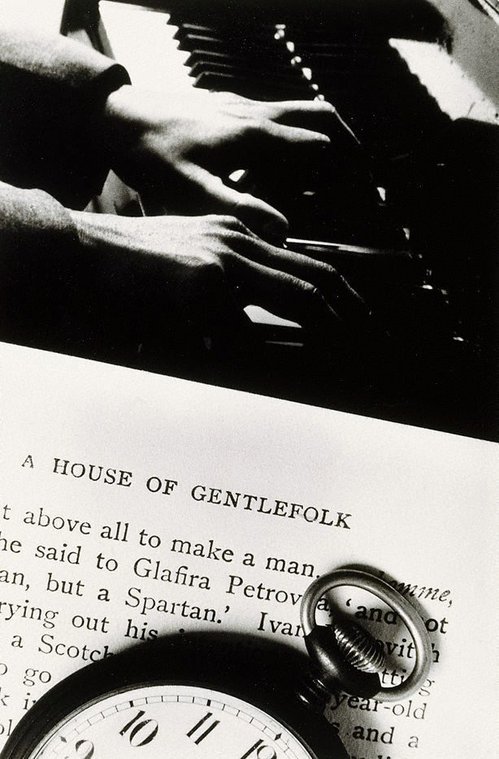Title
13 Clues to a fictitious crime circa 1940 - 1941, from the series 13 Clues to a fictitious crime circa 1940 - 1941
1984
Artist
-
Details
- Date
- 1984
- Media category
- Photograph
- Materials used
- gelatin silver photograph
- Dimensions
- 23.0 x 15.5 cm image; 25.0 x 17.5 cm sheet
- Signature & date
Signed and dated verso, pencil "Mari Mahr 84".
- Credit
- Gift of Edron Pty Ltd - 1996 through the auspices of Alistair McAlpine
- Location
- Not on display
- Accession number
- 547.1996.7
- Copyright
- © Mari Mahr
- Artist information
-
Mari Mahr
Works in the collection
- Share
-
-
About
‘No real crime has been committed. The recurring face is that of my mother – youthful in a way I only knew her from early photographs.’ Mari Mahr 1984 1
Evoking dream-like fragments of real or imagined memories, Mari Mahr’s series of works that reflect on personal histories and journeys are drawn from her Hungarian mother’s photographic archives and found objects. The play with scale and objects confuses space and time, becoming uncanny glimpses into a supposed reality that presents tableaux vivants recalling, for instance, communist posters (‘Remembering the land – Mezögazdasági Emlék’) or ‘Alice in Wonderland (A few days in Geneva)’. Trained as a photographer in Budapest, Mahr was a press photographer before migrating to England in 1972 where she continued her studies. Her earlier works incorporated text, forming a strange and oblique narrative that reflects on a wide range of stimuli including films, events and situations. Drawing on the photomontage technique of the dadaists, futurists and surrealists, Mahr’s complex imagery incorporates typography, objects and images to create compositions that are then photographed, flattening the depth of plane and confusing the reading of the fictive image.
In ‘13 clues to a fictitious crime circa 1940–1941’ we are drawn into a perceived mystery: a telescopic view of a building, an aerial view of a bird flying over a town, the letter A, the number 2553, a clock reading ten past twelve, a half-hidden face, a message, fish, stars, a piano and the book ‘A house of gentlefolk’; all clues that lead back into themselves. There is no accurate narrative and Mahr herself tells us that ‘No real crime has been committed’.2 We have instead been part of a fiction that, like the dadaist and surrealist games and images, fractures reality and our perception of it, reflecting the surrealist obsession with sight and blindness.
1. http://zonezero.com/exposiciones/fotografos/mahr/13clues/13clues01.html. Accessed 08.06.2006
2. See Mari Mahr’s website: www.zonezero.com/exposiciones/fotografos/mahr/menu.html. Accessed 08.06.2006© Art Gallery of New South Wales Photography Collection Handbook, 2007
-
Exhibition history
Shown in 2 exhibitions
The Enigmatic Object, Art Gallery of New South Wales, Sydney, 15 Apr 1997–22 Jun 1997
The surreal aesthetic, Art Gallery of New South Wales, Sydney, 28 Jul 2007–14 Oct 2007
-
Bibliography
Referenced in 3 publications
-
Judy Annear, The Enigmatic Object, Sydney, 1997.
-
Donna Brett, Photography: Art Gallery of New South Wales Collection, 'The surreal aesthetic', pg.113-129, Sydney, 2007, 119, 128.
-
John Stathatos, Isolated Incidents, London, 1989. Text reference in introduction. 'A Sextant for Mnemosyn.' Found on the second page of text.
-




